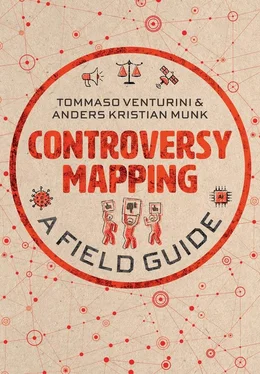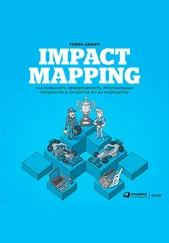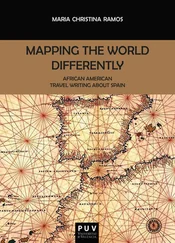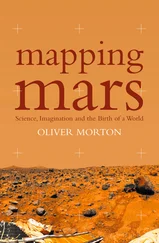Tommaso Venturini - Controversy Mapping
Здесь есть возможность читать онлайн «Tommaso Venturini - Controversy Mapping» — ознакомительный отрывок электронной книги совершенно бесплатно, а после прочтения отрывка купить полную версию. В некоторых случаях можно слушать аудио, скачать через торрент в формате fb2 и присутствует краткое содержание. Жанр: unrecognised, на английском языке. Описание произведения, (предисловие) а так же отзывы посетителей доступны на портале библиотеки ЛибКат.
- Название:Controversy Mapping
- Автор:
- Жанр:
- Год:неизвестен
- ISBN:нет данных
- Рейтинг книги:4 / 5. Голосов: 1
-
Избранное:Добавить в избранное
- Отзывы:
-
Ваша оценка:
- 80
- 1
- 2
- 3
- 4
- 5
Controversy Mapping: краткое содержание, описание и аннотация
Предлагаем к чтению аннотацию, описание, краткое содержание или предисловие (зависит от того, что написал сам автор книги «Controversy Mapping»). Если вы не нашли необходимую информацию о книге — напишите в комментариях, мы постараемся отыскать её.
Controversy Mapping A crucial field guide and hands-on companion for the digital age,
is an indispensable resource for students and scholars of media and communication, as well as activists, journalists, citizens, and decision makers.
Controversy Mapping — читать онлайн ознакомительный отрывок
Ниже представлен текст книги, разбитый по страницам. Система сохранения места последней прочитанной страницы, позволяет с удобством читать онлайн бесплатно книгу «Controversy Mapping», без необходимости каждый раз заново искать на чём Вы остановились. Поставьте закладку, и сможете в любой момент перейти на страницу, на которой закончили чтение.
Интервал:
Закладка:
Tuesday, the Ministerial Conference of the World Trade Organization is met with a vast street protest against the adverse consequences of economic globalization in perpetuating poverty in the Global South. The demonstration takes authorities by surprise. The activists have organized for months through an encrypted messaging system and use social media to create improvised flash mobs in various parts of the city.
Wednesday, a group of endocrinologists and environmental scientists publish an open letter in a prestigious international journal urging governments to take action against a series of commonly used chemicals in agriculture and cosmetics that are accused of being carcinogenic and causing hormonal disorders. The scientists criticize the lack of regulation, but also a media campaign by industrial lobbyists trying to promote a false sense of scientific uncertainty around the effects of these substances.
Thursday, the CEO of an online platform is called to testify before Congress about a massive data leak exposing millions of its users and their personal information to fraudulent marketing schemes and deceptive political campaigns. Discussions ensue about the exceptionality of the situation, as media scholars note that selling personal data for targeted advertising is a standard business model of online platforms. A group of activist-developers seizes the opportunity to launch a peer-to-peer social network where users own their data.
Friday, a forgotten rural town makes the headlines of national newspapers after a confrontation over the construction of a new wind farm. Two unusual coalitions face each other. On the one side, inhabitants worried about noise levels, spoiled views and decreased land value, as well as a group of ecologists protesting the location of large turbines in the path of a major bird migration route. On the other side, the municipal developers, representatives of the wind industry, and another group of ecologists supporting the transition to renewable energy.
Saturday, a boat with African migrants is refused the right to dock at a Mediterranean port and a legal battle breaks out between activists who accuse the state of disregarding the Law of the Sea and basic human rights, and the state accuses the activists of aiding and encouraging illegal migration. A quarrel also arises on the publication of the photos of the overcrowded boat. Some argue that the pictures sensitize the public to the struggles of migrants; others that they promote a sense of siege in the population of affluent countries, thus supporting the discourse of populist and nationalist parties.
Controversies between technoscience and mediatized democracy
Like most of the controversies that constitute our daily media diet, the examples above have two things in common. First, in one way or another, they are all related to science and technology – including, of course, the humanities, social sciences, economics and law. They are prompted by the unintended consequences of some new invention, a technical failure, an unforeseen natural hazard, or a disagreement between purported experts. Second, all these controversies are, to some extent, public . While they may play out partly in private, or behind closed doors in engineering offices or scientific laboratories, they are also staged in and by the media and are thus open for everyone to see and engage with. These sociotechnical controversies – debates that relate to science and technology and that take place in public rather than behind closed doors – constitute the object of this book.
Controversies, where facts, expertise or new technologies are contested, have been pushed to the center of our collective attention by two overlapping developments. First, they have become more salient because science and technology play an increasingly important role in our politics (Weingart, 1999; Marres, 2005b). Since the Scientific Revolution, it has been commonplace to believe that technoscience would gradually remove dangers, manage insecurities, and resolve conflicts. Yet, after five centuries of technoscientific progress, we are every bit as entangled in controversies as we have always been. Far from imposing consensus, science and technology have become the breeding grounds of many of our collective disputes. Even when born outside industry or academia, controversies almost invariably involve questions about technical infrastructures and expert knowledge. Essentially political questions, such as the 2016 Brexit referendum, are still deeply entangled with expert discussions about economic indicators, legal rules, voting systems, and even voting machines. As this field guide will exemplify over and over again, there is no outside of modern science and technology.
While many controversies stem from the failures of modern technoscientific systems, many more come from their success. While extending our control and understanding of social and natural phenomena, science and technology have also produced a wide variety of aftereffects that are increasingly impossible to ignore. These risks and externalities are not new and have been a matter of discussion since the first industrial revolution. Yet, technoscientific networks have grown so deep and wide (Ellul, 1967) that their collateral effects now result in existential crises (Mumford, 1944, 1971) and hazards to the planet (Latour, 2004b, 2017b). Because there is no outside of modern science and technology, there is also no escape from dealing with their consequences. We cannot board a plane without being reminded about our carbon footprint or the risk of moving some virus from one continent to the other; dispose of a “disposable” cup without seeing it floating back to us in an oceanic garbage patch; buy a dress without affecting the economy of some distant country; or cook a meal without considering the planetary consequences of the menu. Nothing is out of bounds or off grid. By extending our reach, the very success of science and technology has made our collective actions more momentous and entwined with that of an expanding cast of recalcitrant others (Castells, 1996; Anderson, 2002; Bauman, 2006).
The second reason why controversies about science and technology have become more visible is the transformation of our infrastructures for public debate. Depending on how you count, technoscientific controversies are as old as the Industrial Revolution (Hobsbawm, 1952) or as technology tout court (Leroi-Gourhan, 1943, 1964). What is new is the way in which modern media encourage and enable a growing variety of actors to take part in them (Lippmann, 1927; Dewey, 1946). The myth of the scholar perched in an “ivory tower,” indifferent to the noise of the world, has always been false but it has become laughable as scientists and engineers are now routinely receiving media training. Likewise, political actors have always mobilized or criticized science and technology to suit their agendas, but in recent years the mediatization of expert disagreements has become a favorite political weapon as industrial lobbies have learned to amplify scientific uncertainty as a way to stall political action (Proctor & Schiebinger, 2008; Oreskes & Conway, 2010).
More recently, sociotechnical controversies have become even more conspicuous because of the amplification, fragmentation, and acceleration of media debates brought about by the advent of social platforms. Challenging the gatekeeping function of broadcast journalism (Manning White, 1950; Shoemaker & Vos, 2009), online media have allowed more people to join the public conversation, making it more democratic, but also more complex and easier to manipulate (Benkler, 2006; Benkler et al., 2018). In the case of science and technology, this transformation is all the more profound as the challenge to news monopolies has been accompanied by a challenge to knowledge monopolies (Lynch, 2017). The contestation of expert authority and the proposal of alternative knowledge systems has become so visible that some have suggested we have entered a “post-truth” era (Keyes, 2004; Sismondo, 2017). At the same time, the rise of filtering and recommendation algorithms facilitate a selective exposure to ideas close to our point of view (Sears & Freedman, 1967), raising questions about the fragmentation of public discourse (Sunstein, 2001; Pariser, 2011) and the risk of political radicalization (Gerstenfeld et al., 2003). Finally, and maybe most importantly, the increasing competition for attention has accelerated the news cycle (Downs, 1972; Hilgartner & Bosk, 1988; Leskovec et al., 2009a) forcing us to consider a growing number of issues in a shrinking span of time (Venturini, 2019a). The prophecy of Walter Lippmann, one of the fathers of modern journalism, has come true: the modern citizen is “tantalized too often by the foam of events” (1927, p. 5) or, more prosaically, “bewildered as a puppy trying to lick three bones at once” (p. 14).
Читать дальшеИнтервал:
Закладка:
Похожие книги на «Controversy Mapping»
Представляем Вашему вниманию похожие книги на «Controversy Mapping» списком для выбора. Мы отобрали схожую по названию и смыслу литературу в надежде предоставить читателям больше вариантов отыскать новые, интересные, ещё непрочитанные произведения.
Обсуждение, отзывы о книге «Controversy Mapping» и просто собственные мнения читателей. Оставьте ваши комментарии, напишите, что Вы думаете о произведении, его смысле или главных героях. Укажите что конкретно понравилось, а что нет, и почему Вы так считаете.












